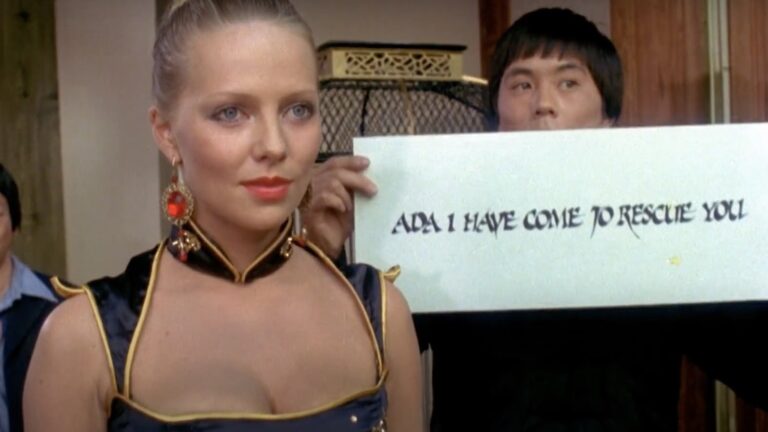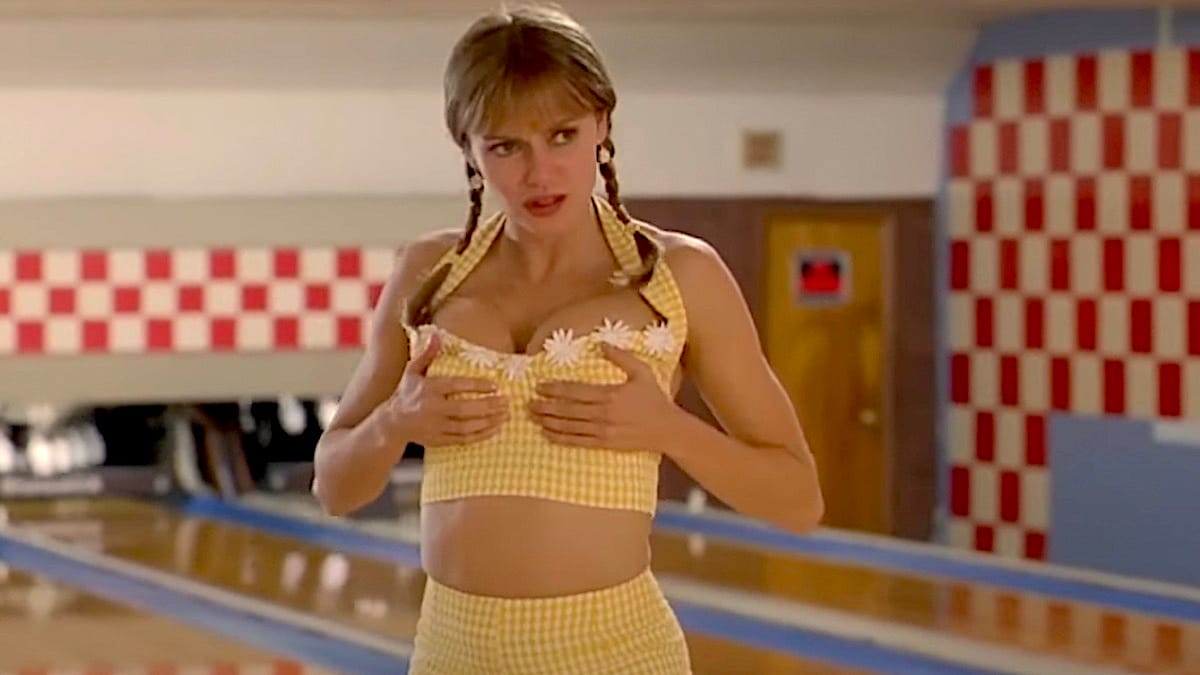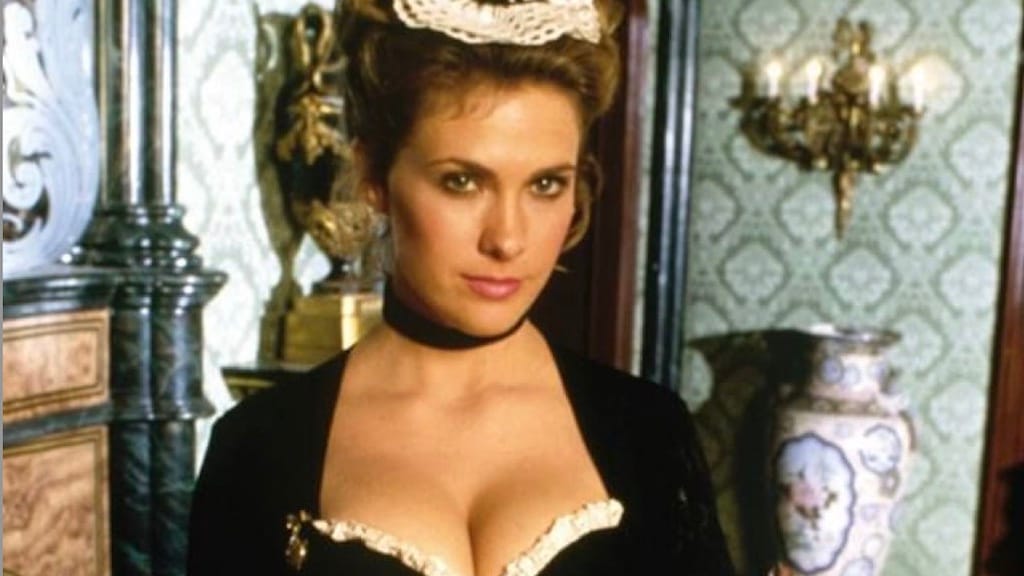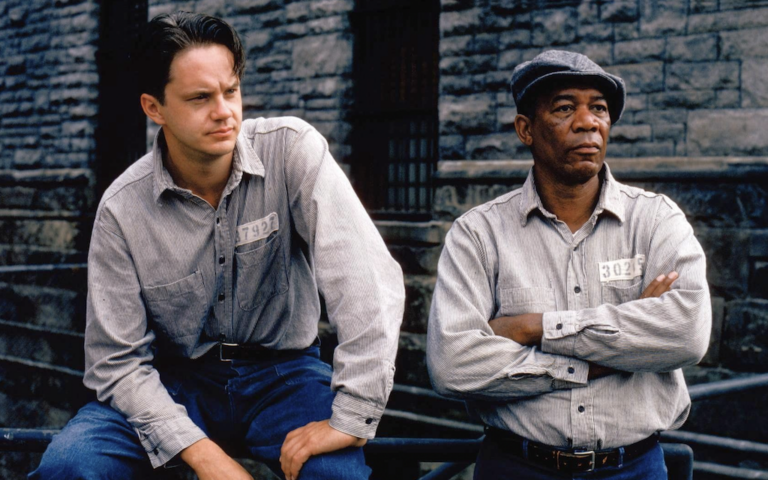These shameless ’90s comedy movies don’t care if you’re offended.
They just want to make you laugh, no matter what. But at the same time, a lot of them smuggle in some smart observations, too.
Think we missed a great ’90s comedy movie? Let us know in the comments.
There’s Something About Mary (1998)

What’s in Mary’s hair (above) will be enough to keep some people from liking this movie not matter what. There’s also plenty of bathroom and private parts humor (notably in the spectacular opening sequence) that the sensitive won’t be able to endure.
And if they get through that, the movie takes the radical approach that people with disabilities should be very much in the mix when it comes to the jokes — not as the butt of them, but taking and throwing shots along with everyone else.
All that said, There’s Something About Mary, like a lot of Farrelly Brothers movies— and ’90s movies — has a very big heart underneath all the gross-out jokes.
Friday (1995)

The blunt talk of Craig (Ice Cube) and Smokey (Chris Tucker) will turn off a lot of people, but come on: Friday is funny. And we love the setup of goodhearted Craig getting pulled into trouble with Big Worm (Faizon Love) by partaking in the smallest possible share of Smokey’s stash.
When it gets to the big face-off between Craig and Deebo (Tommy Lister Jr.), Friday left-hooks you with a pretty stellar message about gun violence and what it really means to man up. S
ure, it’s better to settle your problems with words. But if that’s not an option, fists are a lot less likely to kill.
Austin Powers: International Man of Mystery (1997)

There are so, so many dicey jokes in Austin Powers — it’s a movie gloriously packed with innuendo and overt gross-out jokes.
But because the movie knows the jokes are silly and gross and stupid, it feels smart, and we feel smart laughing at it. It’s paying homage to decades of James Bond-style wordplay.
Also, the scene where Austin refuses to bed Vanessa — “’cause you’re drunk, it’s not right” — has aged very well. We once saw it with a crowd of millennials, in 2017, and the line got an applause break. Yeah baby!
Kingpin (1996)

The second Farrelly Brothers movie on our list would probably offend Amish people, if their beliefs allowed them to see it.
They’re missing out on a lot of racy humor, most of it courtesy of Claudia (Vanessa Angel), as well as an absolutely terrific but filthy joke involving a bull.
Woody Harrelson’s reaction to the best line in the movie — delivered by an Amish character, no less — is maybe his finest moment onscreen, a masterwork of understated acting. And you’ll never look at a milk mustache the same way again.
It’s also on our list of the 7 Sexiest Movies About the Amish.
Fear of a Black Hat (1994)

Starring Rusty Cundieff, who also wrote and directed, Fear of a Black Hat is a sharp satire of constantly shifting hip-hop trends that reacted to them almost as quickly as they happened.
The film, which premiered at Sundance, traces a political/gangster rap group called NWH (the H is for hats) that splinters into various other genres, including desperate diss tracks, P.M. Dawnesque philosophizing, and C&C Music Factory-style dance music.
The movie’s love for hip-hop is obvious — you can’t satirize something this mercilessly without knowing it very well. We love this movie.
Clerks (1994)

Clerks is a Kevin Smith movie, so of course it’s loaded with coarse jokes — none rougher than a sequence in which Dante (Brian O’Halloran) laments the sexual history of his girlfriend (Marilyn Ghigliotti).
Meanwhile Dante’s ex, Caitlin (Lisa Spoonauer) has a horrific, mistaken identity encounter with an elderly customer at the store where Dante, well, clerks.
The iffy moments weren’t too offputting to keep the Library of Congress from adding Clerks to the United States National Film Registry for being “culturally, historically, or aesthetically significant.” The film, made for an initial budget of about $27,575, helped usher in the indie film boom of the ’90s.
Freeway (1996)

Matthew Bright pitch-black Freeway, starring a young Reese Witherspoon, is one of our favorite movies from the 1990s because of its relentless, almost grindhouse commitment to sensationalism. It’s making fun of the tabloid trash of the ’90s even as it perfects it.
In this very twisted update on Little Red Riding Hood, Witherspoon plays an illiterate runaway trying to get to her grandmother’s house after her mother is arrested for sex work. Her Big Bad Wolf is Bob (Kiefer Sutherland), a supposed good samaritan who is actually a serial killer.
One of the many pleasures of the movie is its exquisite casting: Besides the excellent leads, it features Dan Hedaya, Amanda Plummer, Brooke Shields and Bokeem Woodbine, among others.
The Nutty Professor (1996)

If you’re not much for what the kids (the really small ones) call potty talk, you’re not going to like The Nutty Professor, Eddie Murphy’s update of a squeaky clean 1963 Jerry Lewis movie of the same name.
The film won Best Makeup at the 69th Academy Awards thanks to Murphy’s portrayal of not only rotund professor Sherman Klump, but also the members of his extended family, who are prone to rude noises.
The movie also makes many, many jokes about Sherman’s weight, and though we’re rooting for Sherman, and against the people who mock him, it can be hard to watch — especially if you’ve struggled with your weight.
Chasing Amy (1997)

The plot of this Kevin Smith movie would be a non-starter today: A lesbian woman (Joey Lauren Adams) starts dating a heterosexual guy (Ben Affleck). Many people have found a lot wrong with the film — besides a premise that many find objectionable, it’s raunchy throughout.
But it also has its strong defenders: It was pretty advanced, for a mainstream comedy of its time, in its presentation of gay characters.
And filmmaker Sav Rodgers has made a new documentary, Chasing Chasing Amy, about how it led to his own queer coming out.
The Nightmare Before Christmas (1993)

Some people will flat-out reject the whole vibe of this deliciously demented Halloween movie (or is it a Christmas movie?) directed by Henry Selick, from the mind of Tim Burton. It’s about the Pumpkin King, Jack Skellington, who grows bored with simply crushing it every year at Halloween and decides to branch out into Christmas.
It’s full of genuine scares — the clown with the tearaway face in the first moments is a good gauge of whether kids can handle the movie — but it never tones down the darkness, decay, or worms.
Because of its total commitment to goth atmospherics, the people who love it — many of whom aren’t even in kindergarten yet — absolutely love it. And the people who don’t can go watch a million less thrilling holiday movies.
As an added bonus, the film features a murderer’s row of voice talents, including Danny Elfman, who did the music, Paul Reubens, Catherine O’Hara and Chris Sarandon.
American Pie (1999)

The surreptitious surveillance of Nadia (Shannon Elizabeth) hasn’t aged well at all, and the movie treats the situation too lightly for many modern audiences. (Plenty of people knew it was wrong in 1999, as well, including, to the movie’s credit, some characters in the film).
But that’s only one of the potentially offensive things in American Pie, which also features, of course, a very upsetting scene between a young man (Jason Biggs) and a pie.
South Park: Bigger, Longer and Uncut (1999)

South Park: Bigger, Longer and Uncut seeks out sympathy for the devil: We’re supposed to root for Satan himself as he tries to escape an abusive relationship with Saddam Hussein.
There’s also lots of violence against kids and flagrant anti-Canadian propaganda. But of course, Canadians were too nice to get offended.
But the best thing about the movie is Satan realizing that he doesn’t need anyone — not even Saddam Hussein — to complete him. What he needs is a little time alone.
Liked This List of Shameless ’90s Comedy Movies That Don’t Care If You’re Offended?

If so, you just might also like this list of ’90s Movies Only Cool Kids Remember.
Or this video of ’80s Movies Only Cool Kids Remember.
Main image: Kingpin. MGM.
Editor’s Note: Corrects main image.






























